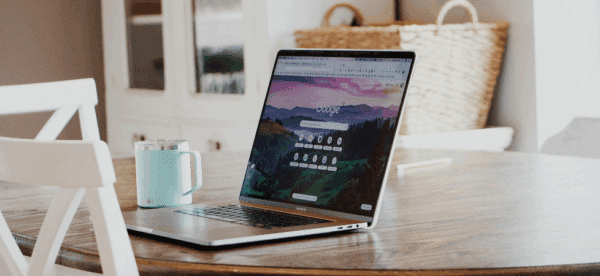Accessibility: Your Inclusive Web Welcome Mat

Have you ever craved a certain food only to arrive at that restaurant just minutes after it closed?
You can view the display case from the closed door, but there’s absolutely no way in.
Insanely frustrating, this is a real experience to 20% of Americans with disabilities who use the Internet. While the Internet is swirling around us, in the palms of our hands, in our cars, at businesses, vacation hotels, and education, for some, it might not be an equal experience of access.
Websites on mobile platforms, for example, with all of its dazzling promises of limitless access, are only as usable as its user’s ability to access. Let’s break it down.
What is web accessibility?
Web accessibility is the inclusive practice of removing barriers that prevent interaction with, or access to websites, by people with disabilities.
When websites are correctly designed and developed with accessibility in mind, all users have equal access to information and functionality. Just like we are taught that each person is unique, so too is each person’s interaction with a website.
A blind person has a vastly different experience with a website than someone who might be Deaf, and someone who has cognitive disabilities might interact in a unique way as well. While your website might not be able to accommodate everyone, having a commitment to accessibility puts you in the right direction.
How do people with disabilities interact with a website?
Thanks to data connections and ubiquitous Wi-Fi, we could potentially connect to anyone anywhere, but that connection is pointless if web content can’t be read by screen reading software for users who are blind, or screen magnifiers for users who have low vision.
Called assistive technologies, these items such as screen readers (text to speech software), screen magnifiers, or refreshable Braille displays, ensure that all the information that is being relayed as text on a screen can be heard or communicated in a way that someone who has a disability can read.
In my tenure working for and with people with disabilities at Accessibility Partners, but also as a disability rights advocate, I always consider how my coworkers, family, and friends access the same websites that I do, regardless of disability.
Technology is everywhere! But does it work for everyone?
Technology helps improve communication in our day-to-day lives.
How often do you check into a cool location, take pictures at an event, or just chat on instant messenger? While it may seem like an everyday thing, people with disabilities are often shutout due to inaccessible design.
Items like smartphones, tablets, websites, mobile apps, and more control how we communicate and access information, but too often they prove to be more of a barrier than a bridge. Our devices are doing a good job at having assistive technology built in, like VoiceOver, TalkBack, zoom, color contrast, and other features, but they aren’t effective if the web content doesn’t cooperate.
The Demographics of Disability
Since people with disabilities are the fastest growing minority group in the United States, it makes tremendous marketing sense to develop web content and apps that can be fully usable by anyone, regardless of their disability.
Laws like the Americans with Disabilities Act are beginning cover the Internet as a place of public accommodation, so it would make sense to be ahead of the curve. Design with accessibility in mind, especially with our tips (to be shared in an upcoming post).
People with disabilities are using mobile devices like tablets, wearables, and smartphones to access the Internet because they are increasingly more accessible than some of their more standard hardware counterparts.
Moving Forward with Accessibility
Always have users with disabilities test drive a website or app before it goes live to make sure they can access and find all of the information that a similarly situated person without a disability would be able to obtain. It’s necessary to know your audience.
If you’re eager and invested about making the most accessible site or app as possible, having a proper test environment like we described above is essential. Reaching out to people with disabilities is easy—our network of savvy users with disabilities is happy provide you some feedback!
Accessibility is the wave of the future. It’s not just an add-on anymore, but it’s an essential part of development. We’re all getting older, and nobody can predict the future. Still, as there are more users of information technology with disabilities now than ever, it’s necessary to address this now.
Accessibility exists at the crossroads where disability advocacy converges with technology. Let’s take that juxtaposition to the next level, and have accessibility be at the forefront for years to come.
Accessibility Partners provides expert accessibility compliance and other consulting services to government agencies and Fortune 500 businesses who want to make their technology accessible to people with disabilities. They have a robust staff of people with disabilities who work with client stakeholders to create a more inclusive technological space for users of all abilities.

